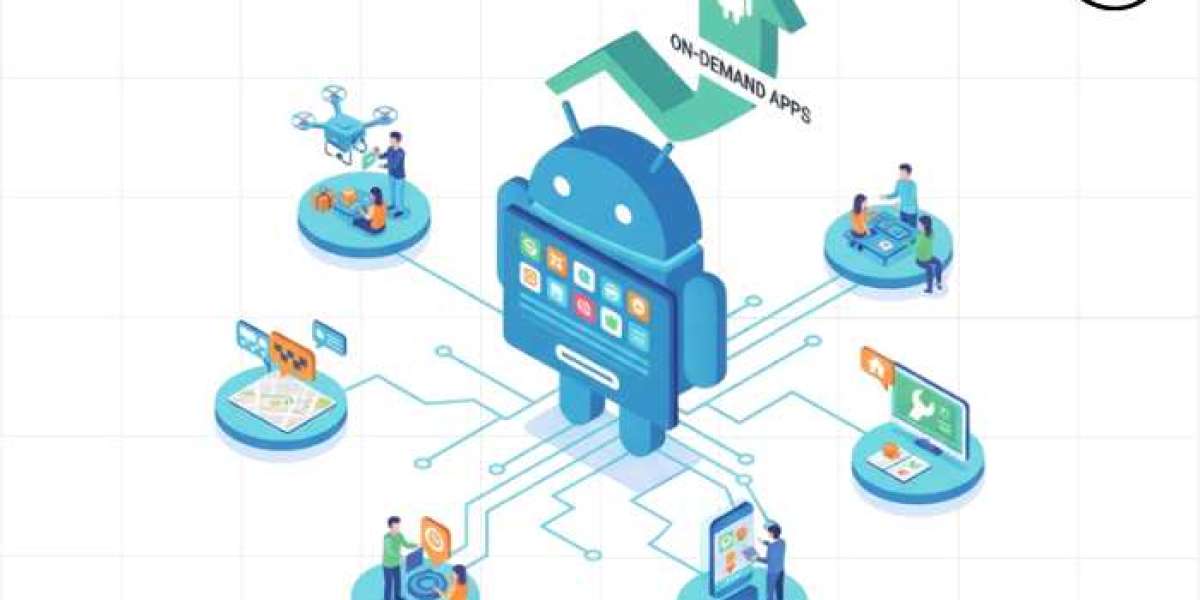The on-demand economy has fundamentally transformed how consumers access services, and Android mobile app development sits at the heart of this revolution. From food delivery to healthcare consultations, on-demand applications have become essential tools that connect service providers with customers instantly. As we move forward, the landscape of on-demand Android app development continues to evolve, presenting exciting opportunities for businesses and developers alike.
The Rising Demand for On-Demand Solutions
The global on-demand economy is experiencing unprecedented growth, driven by changing consumer expectations and technological advancements. Users now expect immediate access to services at their fingertips, whether they're booking a ride, ordering groceries, or scheduling home repairs. Android's dominant market share—accounting for over 70% of global smartphone users—makes it the ideal platform for businesses looking to tap into this massive market.
The COVID-19 pandemic accelerated this shift dramatically, normalizing behaviors like contactless delivery, virtual consultations, and remote services. This cultural transformation has created fertile ground for innovative on-demand Android applications across virtually every industry imaginable.
Emerging Sectors and Opportunities
While ride-sharing and food delivery pioneered the on-demand space, new sectors are rapidly emerging. Healthcare telemedicine apps enable patients to consult doctors remotely, while on-demand beauty and wellness services bring spa treatments directly to customers' homes. Educational platforms connect students with tutors instantly, and professional services marketplaces link businesses with freelance experts in real time.
The gig economy continues to fuel this expansion, with platforms facilitating everything from pet care to home cleaning and fitness training to legal consultations. Each sector presents unique development challenges and opportunities, requiring specialized features, security protocols, and user experiences tailored to specific service categories.
Technological Advancements Driving Innovation
Several cutting-edge technologies are reshaping on-demand Android app development. Artificial intelligence and machine learning enable smarter matching algorithms, predictive analytics for demand forecasting, and personalized user experiences. Chatbots powered by natural language processing provides instant customer support, reducing response times and operational costs.
Real-time location tracking and mapping technologies have become more sophisticated, offering accurate ETAs and optimized routing for delivery services. Cloud computing ensures scalability, allowing apps to handle traffic spikes during peak demand periods without performance degradation. Integration with IoT devices opens new possibilities, such as smart home service apps that interact directly with connected appliances.
Blockchain technology is also making inroads, particularly in payment processing and building trust through transparent transaction records. Augmented reality features are enhancing user experiences in sectors like home design, furniture shopping, and virtual try-ons for fashion and beauty services.
Essential Features for Success
Modern on-demand Android apps must incorporate several critical features to remain competitive. Seamless user registration and profile management create friction-free onboarding experiences. Intelligent search and filtering help users quickly find exactly what they need. Real-time tracking keeps customers informed about service status, reducing anxiety and support inquiries.
Secure, multi-payment gateway integration accommodates diverse user preferences, from digital wallets to credit cards and cash on delivery. Push notifications keep users engaged with order updates, promotional offers, and personalized recommendations. Robust rating and review systems build trust and accountability within the platform ecosystem.
In-app chat functionality enables direct communication between service providers and customers, resolving queries quickly. Advanced analytics dashboards provide businesses with actionable insights into user behavior, service performance, and operational efficiency.
Development Challenges and Solutions
Creating successful on-demand Android apps comes with unique challenges. Ensuring real-time synchronization across multiple users requires robust backend architecture and efficient database management. Security concerns, particularly around payment processing and personal data protection, demand rigorous encryption and compliance with regulations like GDPR.
Scalability remains crucial—apps must handle growth from hundreds to millions of users without compromising performance. Developers increasingly turn to microservices architecture, cloud-native solutions, and containerization to build flexible, scalable applications.
Battery optimization is another critical consideration, as location-based services can drain device power quickly. Implementing efficient GPS usage, background process management, and strategic API calls helps preserve battery life while maintaining functionality.
Conclusion
The future of on-demand Android app development looks incredibly promising. As 5G networks become widespread, apps will deliver even faster, more responsive experiences. Voice-activated interfaces will make service requests more intuitive, while predictive AI will anticipate user needs before they arise.
Sustainability features, such as carbon footprint tracking and eco-friendly service options, will appeal to environmentally conscious consumers. Hyper-local services will proliferate, connecting users with neighborhood providers for ultra-fast fulfillment.
For businesses and developers, the message is clear: the on-demand economy represents not just a trend but a fundamental shift in consumer behavior. By embracing emerging technologies, prioritizing user experience, and staying adaptable to changing market needs, Android app developers can create platforms that don't just meet current demands but anticipate tomorrow's opportunities.













